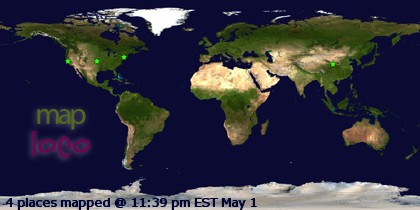My first digital camera was the Olympus C-700 UZ in 2002. It had a 10x optical lens -- which was considered an ultra zoom in those days -- 2.1 megapixels, and was about ¼ as heavy or bulky as my Pentax. On my 1 Gb card, I could shoot 1,250 pictures. I was sold. It did everything my Pentax did, including the zoom, the various shooting modes, manual focus control, and was tiny. And it had what I deemed then (and still deem today) as essential: an electronic viewfinder. LCD screens suck in so many ways, and if you're zoomed in, the camera is just not the slightest bit stable unless grounded to your face.
Bye bye film. I never looked back.
In 2006, I got tired of the purple fringing problem of the C-700, so I upgraded to an Olympus SP-500 UZ, which was a very similar camera to the C-700 UZ, still with a 10X optical zoom, but with 8 megapixels. I always shot 3 megapixels, and used those "extra" megapixels to add non-digital zoom ability. That gave me effectively 15x optical zoom. The camera was slightly bigger, though.
I liked my SP-500, but in 2008, I was in Montreal for the Grand Prix, and I dropped it from the grandstand about 10 m to the concrete. Bye bye SP-500, hello the camera that had replaced it by then, an Olympus SP-560 UZ. Still 8 megapixels but now an 18x optical. Again I always shot 3-5 megapixels, so had an effective 24x optical lens. But the 560 was bigger still.
In the spring of 2010, when it was just under 2 years old, my 560 started acting up. Photos were suddenly purple. And not a little purple. I went back to my C-700 for a short while, then bought a Fuji HS-10. While almost the exact same size as my Pentax Super Program and lens, it had a 30x optical lens that was a fully manual (no motor) zoom, and a manual focus ring, and threads for filters like a polarizer! With now 10 megapixels, I was shooting up to 42x optical without digital zoom. But...
In the fall of 2013, when it was just over 3 years old, my Fuji's lens started acting up, with lens elements falling out of alignment. In wide angle shots, the bottom of the picture was in focus while the top was not. I could not shoot anything wider than 100 mm equivalent without distortion. I looked at getting it fixed, but was frustrated by the fact the a repair would cost more than a new HS-50, and the bulkiness of the camera was getting me down.
So I bought a Pentax X-5, which was a big compromise. Yes it was a 16 megapixel camera, and yes it had a 26x optical (giving me generally 52x non-digital zoom), and yes it was smaller. But... the camera had tons of issues. The manual, shutter and aperture priority modes were a total joke, as was the manual focus. It took 5-8 seconds from power on to be ready to shoot, meaning I lost lots of pictures of things like birds and animals. It's auto focus sucked.
And last week, at just over 2½ years old, it died. The motor that drives the lens quit working, making the camera useless.
Each of these cameras cost ~$350, meaning each has cost me $100/yr just owning it. My C-700 lasted the longest at 4 years, my X-5 the shortest at 2½ years. My SP-560 lasted only 2 years, but has backed me up on occasion until it dies again, so has probably had 3 years of life.
I think these things should last longer than 3 years, personally. And they're so freaking bulky that I've lost everything I ever gained by moving away from 35 mm.
Now my options are:
- Fix the SP-560's purple problem. Probably can't be done, given that it's most likely a CCD failure problem, and the camera's 9 years old.
- Fix the HS-10's lens element alignment problem. That's $500 if it can be done. And it's still a big-ass camera.
- Fix the X-5's lens motor. Is it worth throwing money into a camera that wasn't that good to begin with?
- Buy a new camera, most likely the Panasonic DMC-FZ70. That's $325.
Yeuch.
Postscript:
I went into my one local camera shop to pick up the FZ70. First, they were out. But I had a good conversation with the manager about my needs and my problems. He observed that 2-4 years was about all you can expect in a consumer bridge camera like the last 4 I've owned. He noted that spending $1,200 would get me a mirrorless interchangeable lens camera that would probably last 5-7 years. But...
He said for what I needed, I was barking up the wrong tree anyway. He recommended either the Sony HX90V or the Panasonic ZS50 or ZS60. Both are ultra compact cameras, both have an electronic viewfinder, both have 30x optical zoom, and both are about 1/3rd the size of any camera I've had before. They had neither in stock.
I did a little research and ordered an ZS50. It was $430, but (on the advice of store guy) I bought a 4 year extended warranty. for $70. This at least guarantees the camera will work for at least 4 years...





























































